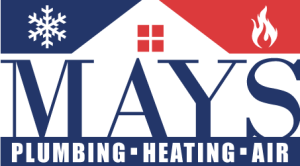The Plumbing Checklist: 10 Essential Items Every Homeowner Should Have On Hand
As a homeowner, you always want to ensure that your home runs smoothly. From the roof over your head to the plumbing beneath your feet, every detail in your house contributes to a comfortable living experience. _Proper plumbing maintenance_ can save you thousands of dollars in potential damages and repairs. Having the right tools and supplies readily available can help you handle small repairs or emergencies efficiently. In this article, we’ll cover _ten essential plumbing items_ that every homeowner should have in their toolkit.
1. Plunger
A plunger is often the first line of defense against a clogged drain. _This simple yet effective tool_ works by creating a vacuum and pressure that helps to clear blockages in toilets, sinks, and tubs. It’s essential to have both a toilet plunger (with a flange) and a sink plunger (with a flat bottom) to tackle different issues.
Choosing the Right Plunger
When selecting a plunger, look for one that is sturdy and has a comfortable grip. Make sure the rubber is flexible enough to form a tight seal over the drain. Regularly inspect your plunger and replace it if it shows signs of wear or damage.
2. Pipe Wrench
A _pipe wrench_ is an indispensable tool for any plumbing job. This tool is used for gripping and turning pipes when installing or repairing plumbing fixtures. Due to its unique jaw design, a pipe wrench can easily grip onto round surfaces without slipping.
Using a Pipe Wrench Safely
To use a pipe wrench, adjust the jaw to the size of the pipe, ensuring a snug fit. _Always apply force_ in the direction of the tightening motion to avoid damaging the pipe. A good pipe wrench will be heavy-duty and rust-resistant, ensuring lasting durability.
3. Adjustable Wrench
Often referred to as a crescent wrench, an _adjustable wrench_ is versatile and can be used on various sizes of nuts and bolts. It can be particularly useful for tightening or loosening faucet fittings and connecting pipes.
Benefits of Having an Adjustable Wrench
The advantage of an adjustable wrench is its ability to adapt to different sizes. This feature saves you from needing an entire set of fixed wrenches. Make sure your adjustable wrench has a firm grip so that it won’t slip while you’re working.
4. Plumber’s Tape
Also known as Teflon tape, _plumber’s tape_ is an essential item for any homeowner involved in plumbing. It is a thin tape used to seal pipe threads, preventing leaks when connecting plumbing fixtures.
How to Use Plumber’s Tape
When applying plumber’s tape, wrap it around the threaded end of the pipe, making sure to cover it completely and leaving the first thread exposed. This practice helps to create a seal that stops leaks.
5. Pipe Cutter
A _pipe cutter_ is essential for cutting pipes accurately and cleanly. Whether you’re dealing with PVC, copper, or steel piping, a pipe cutter will make the job easier and ensure a smooth edge, which is vital for proper sealing.
Tips for Using a Pipe Cutter
Always measure the length you need before cutting. When using a pipe cutter, mark the pipe to know where to cut accurately. _Additionally, make sure to apply steady pressure_ to avoid damaging the pipe.
6. Plumbing Snake
A plumbing snake, also known as a drain snake or auger, is used to remove stubborn clogs that cannot be reached with a plunger. This flexible tool can navigate through pipes and drains to break apart clogs or pull out blockages.
Effective Use of a Plumbing Snake
To use a plumbing snake, insert the tool into the drain until you hit the clog. _Rotate the snake_ and push gently to break it apart or hook onto it to pull it out. Remember to wear gloves to keep yourself clean while doing this task.
7. Basin Wrench
A basin wrench is a specialized plumbing tool designed to reach and tighten or loosen nuts that are located in tight spaces, such as under sinks. This tool can make a significant difference in effectively working on plumbing fixtures.
When to Use a Basin Wrench
Use a basin wrench when installing or replacing faucets and sink drains. Its extended handle and adjustable jaw make it easier to reach hard-to-access areas. Always ensure that the wrench is properly aligned with the nut before applying force.
8. Replaceable Washers and O-Rings
Having a supply of _replaceable washers and O-rings_ can save you time and money in case of leaky faucets or fixtures. These small rubber components wear out over time and often lead to leaks if not replaced.
Identifying Worn Washers and O-Rings
Look for signs of wear like brittleness, cracks, or a change in shape. When replacing these components, make sure you have the right size for your faucet or fixture. _Always keep a few spares on hand_ to address issues quickly.
9. Utility Knife
A utility knife comes handy when installing pipes or cutting through different materials, like plastic or rubber. This versatile tool is essential for any homeowner who wants to take on plumbing tasks.
Using a Utility Knife Safely
When using a utility knife, always cut away from your body to prevent accidental injuries. _Ensure that the blade is sharp_ to make clean cuts, reducing the chances of damaging materials. Replace the blade as needed to maintain performance.
10. Bucket and Rags
Lastly, having a clean bucket and absorbent rags is critical for any plumbing situation. A bucket can catch any excess water during repairs, while rags will help you clean up spills quickly.
Tips for Maintenance
Always keep a few old towels or rags in your plumbing toolkit. They can be invaluable when troubleshooting leaks or spills. _The bucket can also serve as a temporary storage place for tools or parts during a project_.
Conclusion
Equipping your home with these ten essential plumbing items can prepare you for many common plumbing needs and emergencies. _Regular maintenance and small repairs_ can not only save you money but also enhance the life of your plumbing system. Don’t wait for a plumbing emergency to occur; gather these tools now and be prepared. Your home and your wallet will thank you for it!










